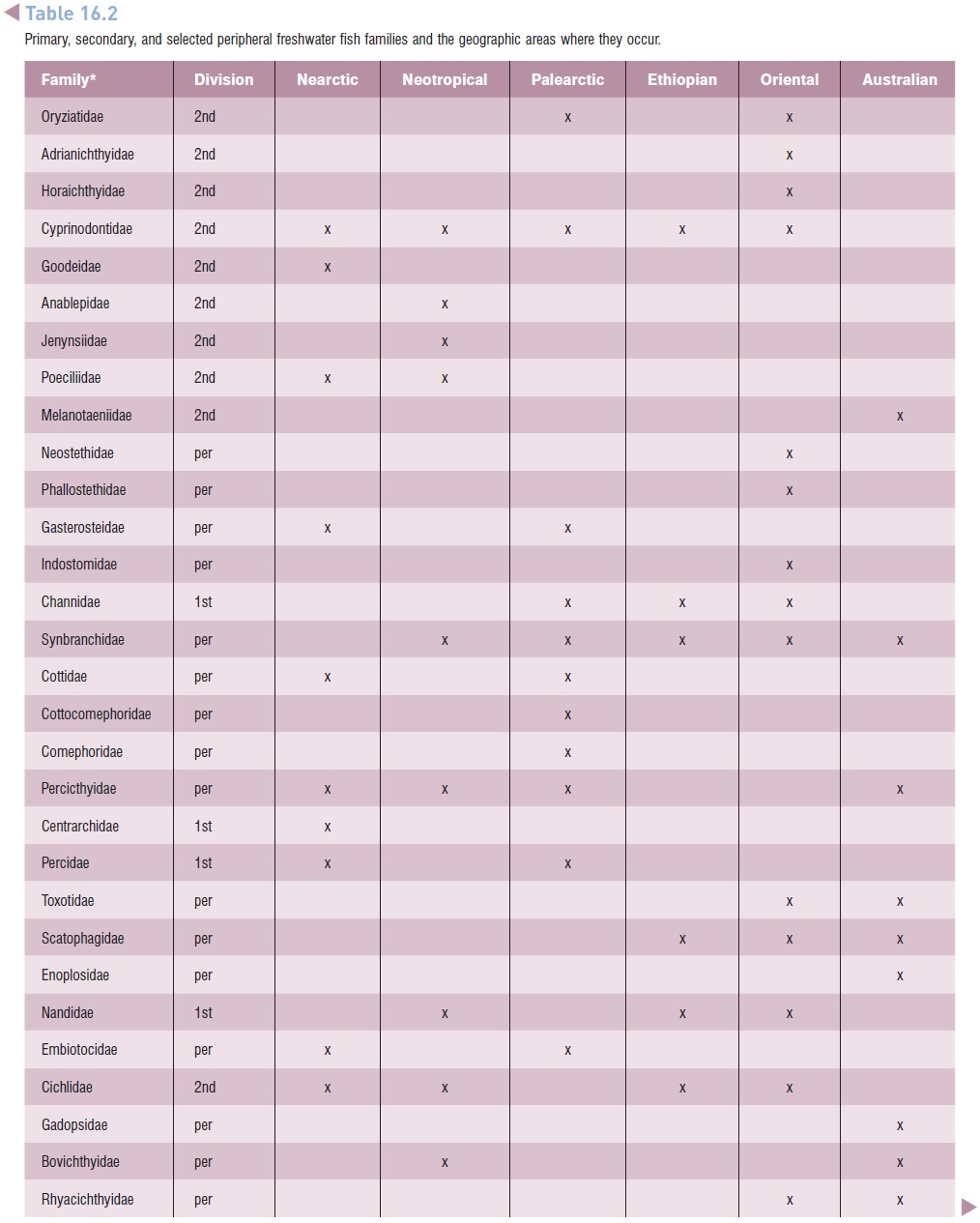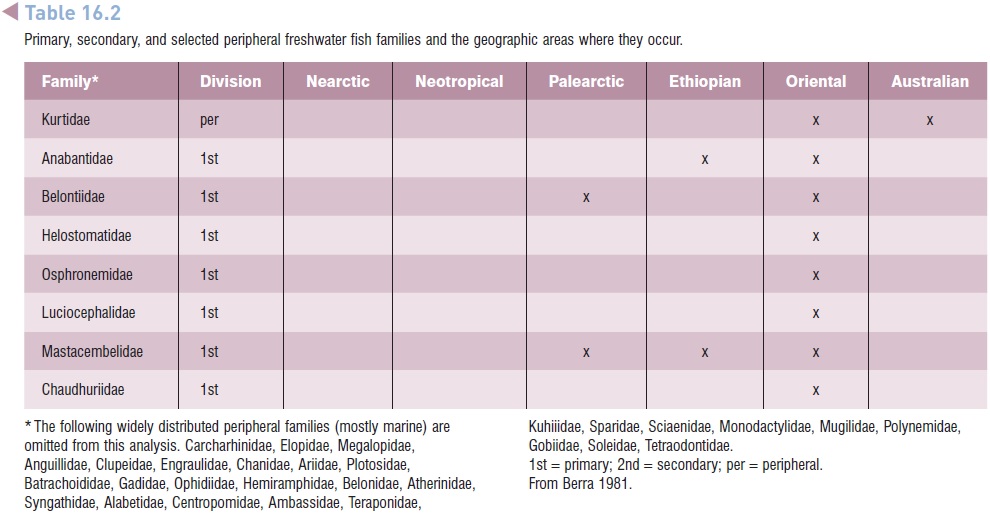Chapter: The Diversity of Fishes: Biology, Evolution, and Ecology: Zoogeography
Freshwater fishes
Freshwater fishes
Freshwater fishes make a much larger contribution to biodiversity than might be expected based on area alone. Cohen (1970) was surprised to find that about 41% of the world’s fish species live in fresh waters (see Fig. 16.1). But Horn (1972) demonstrated the real signifi cance of this by pointing out that fresh waters comprise only 0.0093% of the water on the planet, which means that nearly half of all fish species live in less than 1% of the world’s water supply. Another way of looking at this is to calculate the mean volume of water per species of marine versus freshwater fishes. The average marine species has 113,000 km3 available to it, whereas the average freshwater species has only 15 km3.
The probable causes of this 7500-fold disparity in biodiversity in the two major habitat types are undoubtedly very complex, involving ecological as well as historical (phylogenetic and geological) factors. Two likely influences are productivity and isolation. Shallow waters receive significant sunlight, allowing photosynthesis, which forms the base of food webs. Most fresh waters are shallow and relatively productive, whereas most water in the world’s oceans lies well below the euphotic zone where primary productivity occurs (see Fig. 18.1). Shallow marine waters are productive and support a diverse fauna, as is evident in the coastal zones that support 45% of all fish species (see Fig. 16.1).

Also infl uencing diversity is the potential for isolation, an historical factor that differs greatly between marine and freshwater habitats. Marine habitats are broadly continuous; significant faunal breaks occur primarily where continental landmasses, large rivers, or sills occur, and where major oceanic currents act as geographic boundaries. Fresh waters, in contrast, are frequently and readily broken up into isolated water bodies. Drought, volcanoes, landslides, tectonic uplifting, glacial retreat, and dam building by beavers are some of the agents that can lead to a body of water losing its connections with other bodies, which in turn isolates the fishes in that body from gene flow with other areas. Genetic isolation is a driving force of evolution, leading to such dramatic events as explosive speciation and formation of species flocks. Isolating events are, therefore, much more common in fresh waters, and it is therefore not surprising that so many species of freshwater fishes have arisen in such little space.
Freshwater fishes versus fishes in fresh waters
Up to this point in our discussion, we have used the term freshwater fishes a little carelessly. Historically, there was also much confusion surrounding the term until George Myers (1938) clarified the problem. He distinguished between primary freshwater fishes, whose members are very strictly confined to fresh water, and secondaryfreshwater fishes, whose members are generally restricted to fresh water but may occasionally enter salt water. Most families of primary freshwater fishes have had a long evolutionary history of physiological inability to survive in the sea. The term peripheral is used for a number of genera and species of marine families that have taken up more or less permanent residence in fresh water or that spend part of their life cycle in fresh water and another part in marine habitats. There are about 85 families of primary freshwater fishes, 11 of secondary, and more than 30 of peripheral freshwater fishes (Table 16.2).
The origins of freshwater fishes, and the importance of distinguishing among the different types, become particularly clear when the composition of fishes in the fresh waters of islands is considered. Continental islands that have been connected to the adjacent mainland, such as Trinidad, have the same kinds of fishes as are present on the adjacent mainland of South America. Oceanic islands such as Bermuda, the West Indies, and Hawaii, which have never been connected with continents, have no native primary freshwater fishes. All the native fishes in their fresh waters are secondary or peripheral species.





Related Topics